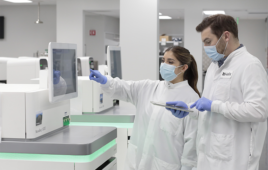
A new scientific statement from the American Heart Association summarizes the state-of-the-science of genomic medicine — the study of the health effects of the molecular interactions of a person’s unique genes — for studying cardiovascular traits and disorders and for therapeutic screening.
“The promise of genomic medicine is to be able to use a patient’s specific genetic material to make a personalized forecast of their risk for heart disease, and if they develop disease, predict its course and determine the particular medications that are more likely to help with their disease,” said Kiran Musunuru, M.D., Ph.D., M.P.H., chair of the writing committee for the statement and an associate professor of cardiovascular medicine and genetics at the Perelman School of Medicine at the University of Pennsylvania in Philadelphia.
“Over the next decade, as we learn about cardiovascular disease at the molecular level, the hope is that we can develop therapies that will take advantage of this knowledge and be able to either treat or potentially cure disease,” Musunuru said.
DNA and RNA are two types of molecules found in most living organisms. DNA contains genetic information that is “translated” by means of RNA into proteins and metabolites, the tiny components that form cells and which play many other critical roles in the body. While genes, which are made up of DNA, carry traits inherited from your ancestors and are relatively stable during your lifetime, their “translation” can be altered by environmental factors, such as tobacco smoke, diet and exercise, for example.
Genomic medicine looks at all the types of molecular variation, from the DNA and RNA to the microorganisms in the human gut that seem to play an increasingly important role in maintaining health, and it seeks to find associations between patterns in these data and health outcomes.
An example of genomic medicine that is currently available to doctors is a noninvasive blood test for heart transplant patients, which measures the levels of 11 different RNA molecules to determine whether the patient’s immune system is rejecting the transplant. Traditionally, physicians biopsy cells from the patient’s heart on a weekly or biweekly basis by inserting a catheter into the heart to extract cells to monitor the transplanted organ for signs of rejection. While biopsies are considered relatively safe, there are risks, costs and discomfort for the patient.
“The hope is that with genomic medicine, there will be hundreds of examples of noninvasive tests like this that doctors can do to better forecast and better manage disease,” Musunuru said.
Researchers similarly hope that induced pluripotent stem cells (iPSCs) — stem cells that are grown from mature cells in the body, such as skin or blood, and can be converted into any type of cell — can provide clinicians with a noninvasive method to learn more about a person’s risk of cardiovascular disease and test potential treatments before they are given to a patient.
For example, doctors could use iPSCs to grow millions of a patient’s heart cells in the laboratory and use these cells to identify the best course of treatment to benefit the patient.
The use of iPSCs is still in early testing and not yet available to patients, but the preliminary results are promising, Musunuru said.
“With induced pluripotent stem cells, we will be able to determine upfront which medications are going to work better and get a sense of a medication’s potential side effects,” Musunuru said. “I am confident we will reach the point where we can start incorporating these kinds of cells into actual patient care.”
The statement is published in the American Heart Association journal Circulation: Genomic and Precision Medicine, where Musunuru serves as editor-in-chief.
Filed Under: Genomics/Proteomics




